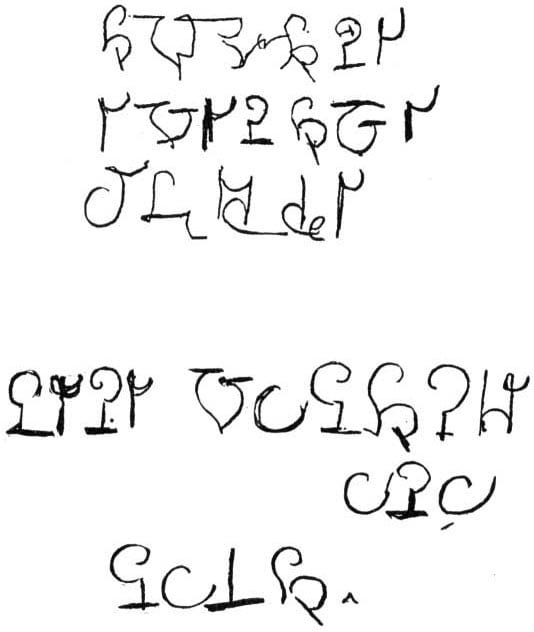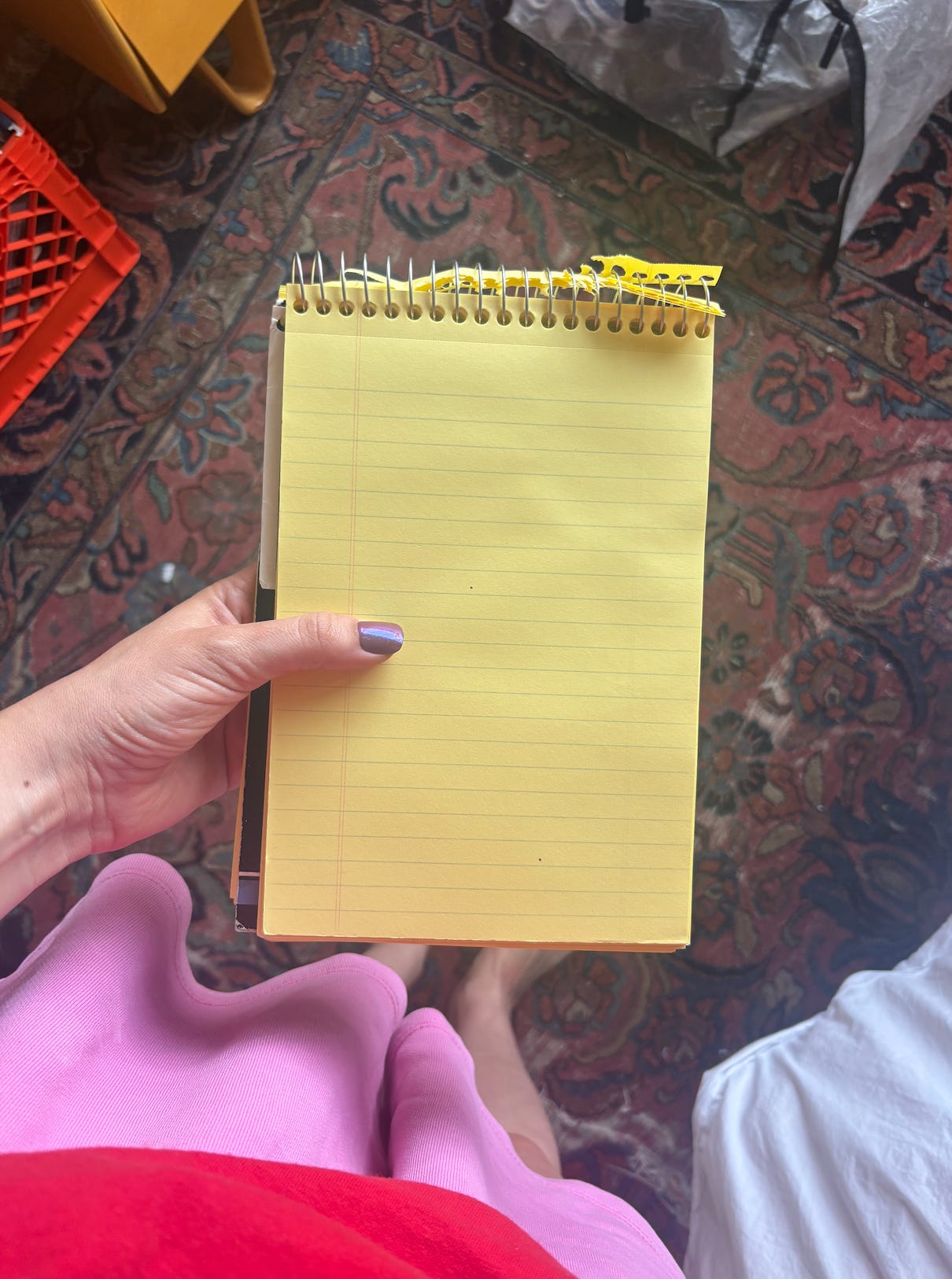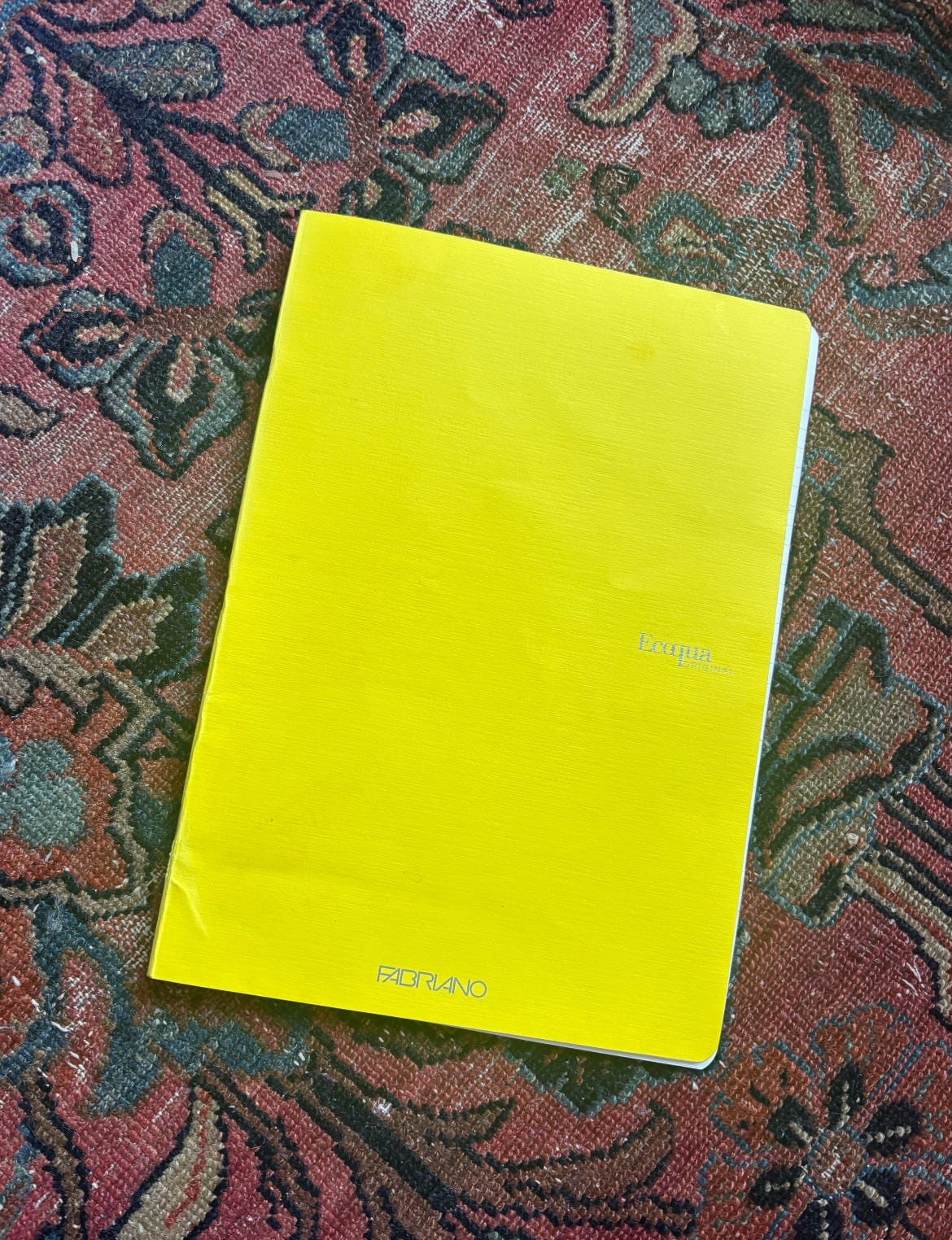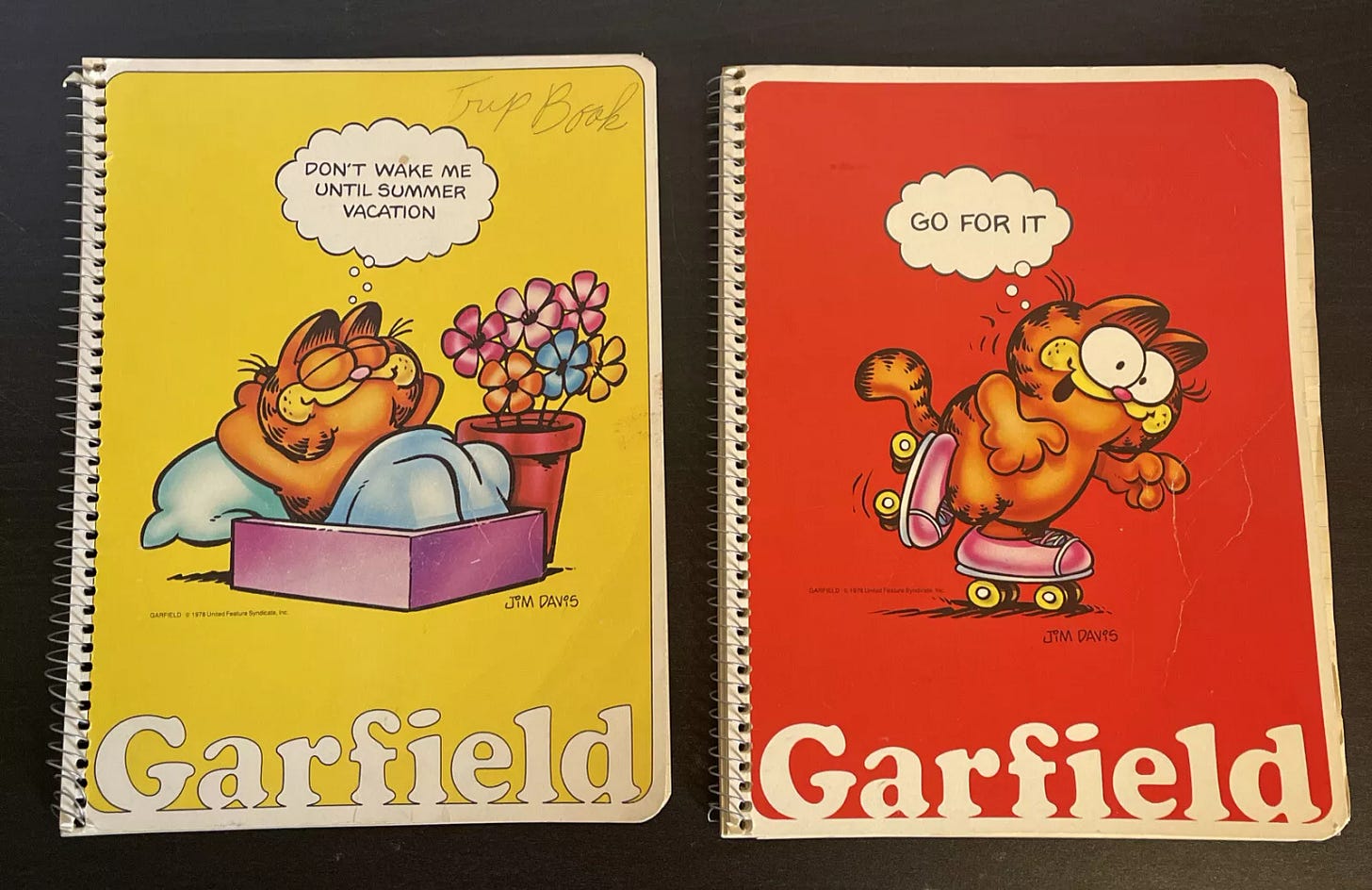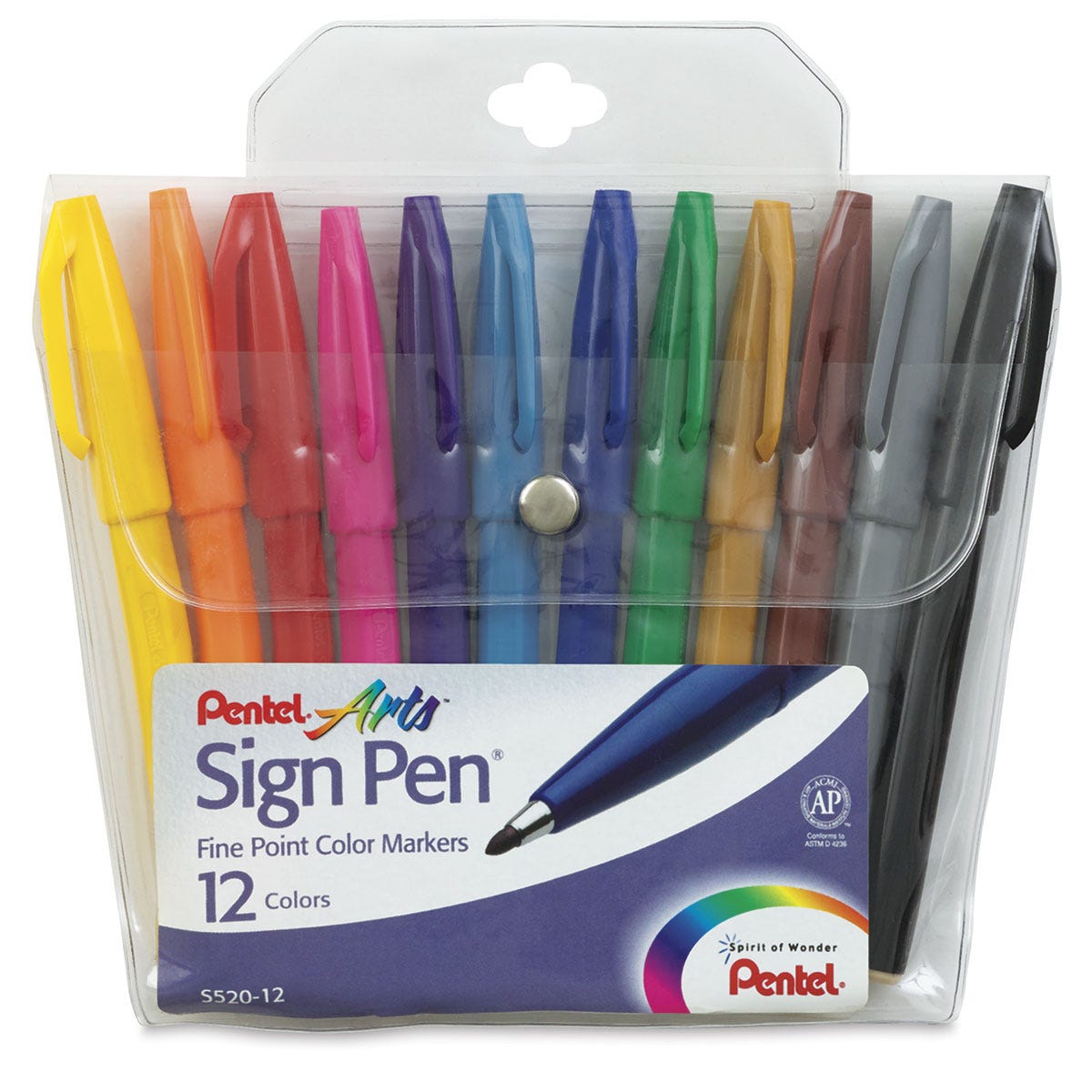Almost 900 people signed up for our free writing workshop yesterday (insane). We practiced free timed writing experiments solo and in groups, the essential building block of writing practice. If you joined us, thank you!
Our more intensive workshop Nemesis Writing Protocol takes place next weekend, July 19 and 20. You can currently sign up at the early bird rate (the fee goes up Wednesday 7/16) with code E4RLY. It’s a shorter enrollment period than usual, so make sure to sign up if you’re interested! We would love to see you there.
As you may have noticed, people are obsessed with tools and daily procedures for writing, both because gear is fun and also because it provides a semblance of control over an uncontrollable process. While it's important to remember that the trick is all in your head, not in your shopping cart, it’s still interesting to see what other people use and why they do it.
So, without further ado, here are all of the tools we use for writing – physical and digital.
Physical Tools
Notebooks
The Mead/Cambridge 6x9” spiral bound writing pad with a stiff back – like a mini legal pad – has been Emily’s go-to notebook for nearly two decades. Everything from college application essays written in the a defunct Upper West Side Starbucks, to final papers for school, K-HOLE reports, project proposals, Nemesis essays, the first draft of her novel Mercury Retrograde, the first draft of Emily’s new manuscript (will it ever come out? only time will tell)…truly everything has been written on this particular pad. The spiral binding makes them lay flat and the stiff back means you can write anywhere, without a table, which is useful – and the small size makes them easier to carry (and easier to fill up a page) than a full size legal pad. She used to make her mom bring them to Germany in a suitcase.
These have been cruelly discontinued (or very difficult to find), but luckily there is a dupe available on Amazon from a company called “iScholar”
iScholar 6x9” writing pad, Amazon
Fabriano Ecoqua notebooks are also excellent – very high quality, well manufactured, affordable Italian notebooks that you can find in some art supply stores, or online. The company also makes watercolor and drawing paper. These are lovely but less expensive than other brands, which is good because you never want your writing materials to be too nice or too fancy to use.
Fabriano notebook on Amazon
In this vein, it’s also good to go to a Dollar Store and get the crappiest notebook you can find with the most ridiculous cover – it will keep you from taking yourself too seriously.
This lot of vintage cartoon notebooks on eBay: we would probably be too precious about using them but they are cool.
Another good option for doing lots of writing practice is simply a stack of white printer paper (especially lovely with the Pentel Sign Pen in a bright or weird color).
Pens
Disposable fountain pens are excellent for fast writing and flow, which is essential. Pilot varsity is the gold standard approachable and inexpensive version that is usually widely available in the US.
On Quill they are about $1.40/each for a color multipack which is a great deal (usually they’re at least double that) – Pilot Varsity Pens on Quill
You can also get into Japanese disposable fountain pens if you’re feeling like entering a rabbit hole (start on Reddit).
The Pentel Sign Pen is another classic for a reason – it’s really a felt tip marker, but easy enough to write with, comes in lots of excellent colors (Emily likes the mustard), and will also fill up a page with fat writing very quickly, which can be satisfying.
Kindle
Reading is of course an essential part of the writing process. We’ve tried many alternative e-ink devices (Boox, Remarkable, etc.) and continue to return to the corporate, inexpensive, functional Kindle.
Digital Tools
iA writer
iA writer describes itself – accurately – as a “pro tool for focused writing”. It’s a very simple and functional app for writing that has stood the test of time. We’ve never forgotten this line from the founder: “A typical page in Word, formatted in a 12px Times with a line height of 1 is a desert of distraction in itself, even if you strip off all the crazy toolbars that surround it.” (A Q&A With iA Writer's Oliver Reichenstein, Business Insider, 2012)
Timer app
There are countless versions of these. Emily uses one called “howler timer” that howls when the time is up. It’s useful for timed writing experiments (the basic building blocks of writing practice). You can turn off your wifi and set a timer, and then write in iA writer until it goes off. Simple and rewarding, though not necessarily easy.
Scrivener
This program is useful for assembling book-length projects and organizing or reorganizing long texts with many parts. If you are working on a longer project it’s worth the money, if not then it’s better to avoid it, as you may fall into a productivity vortex and forget to write.
iOS Notes app
It’s a classic for a reason. Lots of our raw notes for essays and cultural analyses start out here. Did you know you can “scan” documents on it? You probably did, but worth mentioning nonetheless.
Google docs
Better word processor than Notion (for us). We currently do all of our planning in Notion but still draft collaborative essays in Google Docs, which is a little messy.
Notion
We use Notion, but we don’t really know how to use Notion well. It’s probably doable. We probably should watch a tutorial. We make Nemesis notes in Notion and have lots of crazy, hideous, weirdly nested, disorganized pages. It’s nice for sharing docs and making simple shareable web pages, though.
Calibre
Free software that converts ebook formats, so you can take something you pirated (which we know you would NEVER do) and convert it into a properly formatted epub, then send it to your Kindle using the browser.
Sudowrite
An AI tool for fiction writing, and a legitimately fun toy for playing with language. We use it for brainstorming naming, copy, and descriptions. There is specifically a brainstorm function where you can tell it what you want and then thumbs up and thumbs down the responses, which works well. We almost never use the output directly, rather it functions as a jumping off point for riffing and joking and then we end up somewhere good.
Nemesis Junior Strategist (customized Pickaxe)
A customized chatbot trained on our past writing and strategy work, which we use for brainstorming, has been alarmingly good (though slightly corny and repetitive). We recommend using the free version of Pickaxe to create your own, which was a great exercise from the first Autonomous Strategy workshop.
Nemesis Writing Protocol (Summer Reboot Edition) takes place July 19 & 20 – more information and sign up here.





